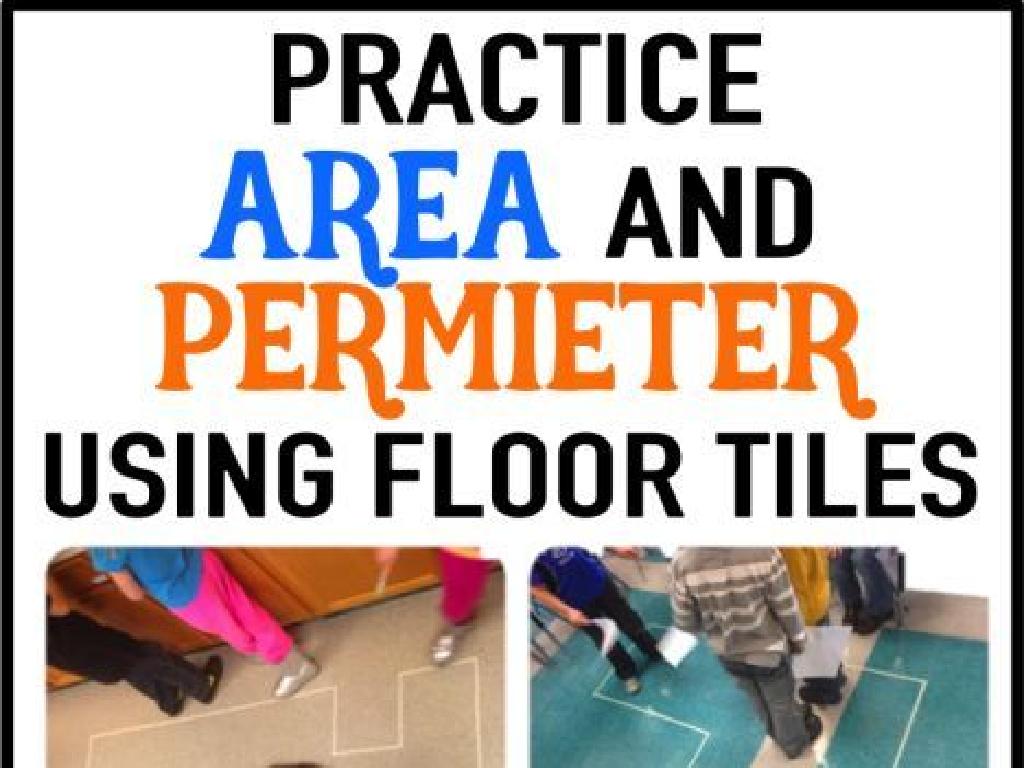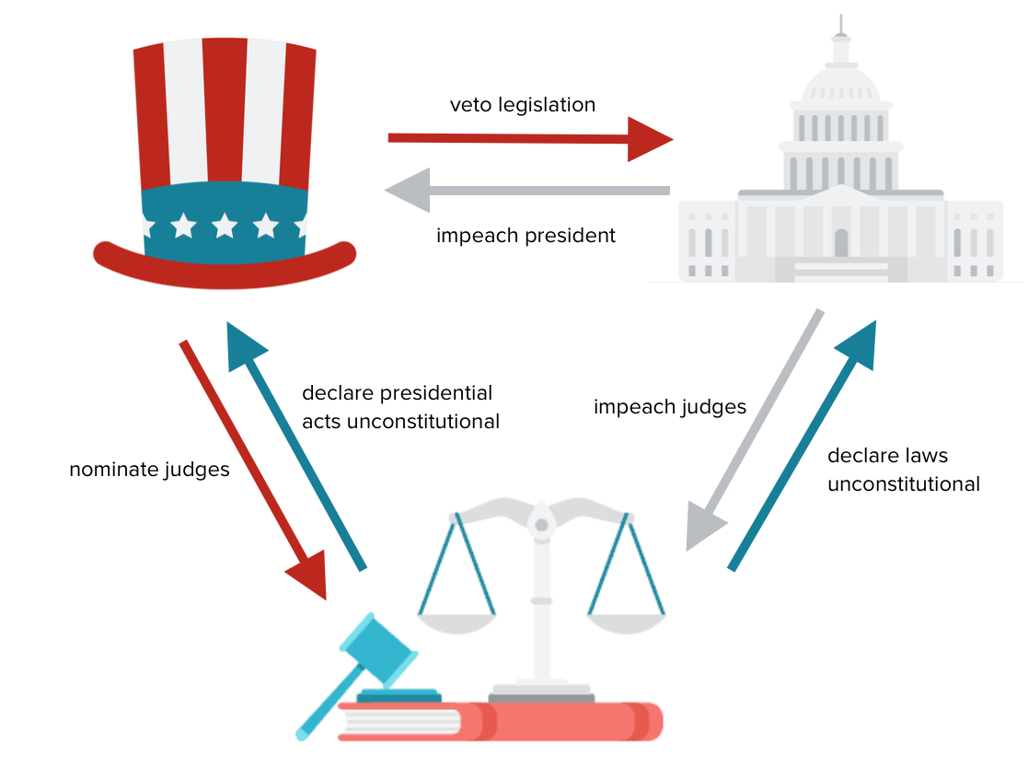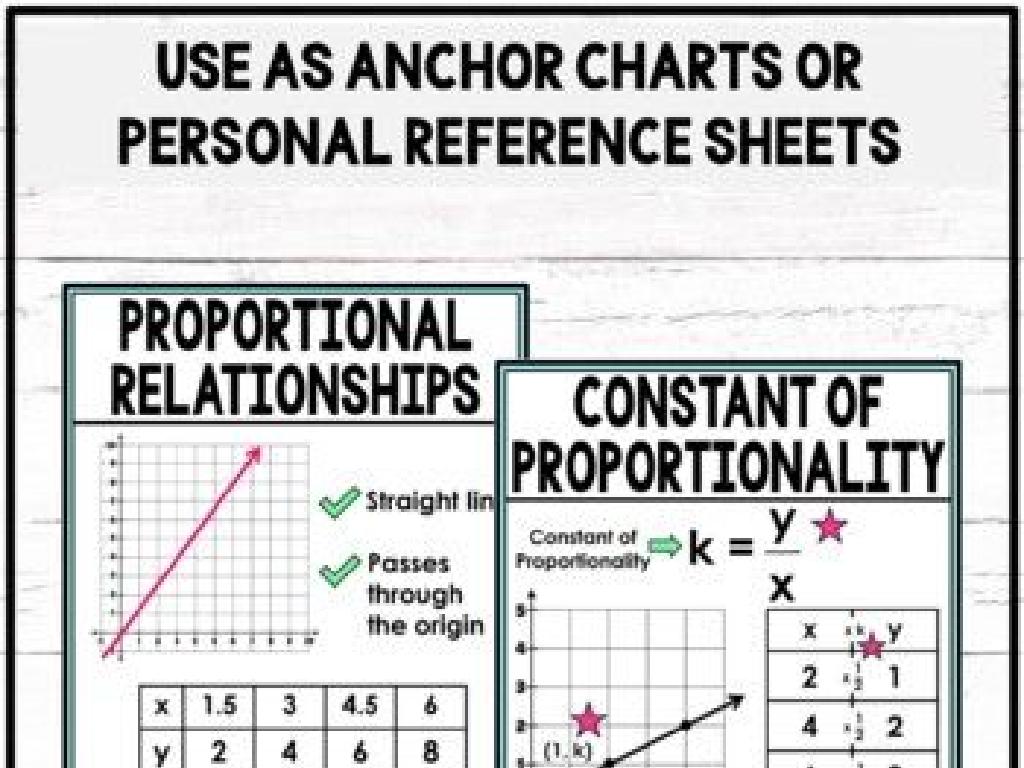Capitalization: Review
Subject: Language arts
Grade: Fourth grade
Topic: Capitalization
Please LOG IN to download the presentation. Access is available to registered users only.
View More Content
Capitalization Review: The Power of Capitals
– Why capital letters matter
Capitals help us spot names, places, and start of sentences.
– Recap: Capitalization rules
We always capitalize the first letter of sentences and names.
– Capitalizing proper nouns
Names of people, cities, and countries always start with a capital letter.
– Capitals in titles and headings
The first and important words in titles of books or articles are capitalized.
|
This slide aims to reinforce the rules of capitalization for the students. Begin by discussing the importance of capital letters and how they help us read and write clearly. Recap the basic rules that were covered in the previous lesson, ensuring that students remember to always use capital letters at the beginning of sentences and for proper nouns. Provide examples of proper nouns such as ‘Samantha’, ‘New York’, or ‘America’. Also, explain that titles and headings use capital letters to stand out and to show significance. Encourage students to think of their favorite book titles and identify the capitalized words. This will help them understand the concept in a context that is familiar to them.
The Basics of Capitalization
– What is capitalization?
– Using a capital letter at the start of a word
– Reasons to use capital letters
– Begin sentences, proper nouns, and titles with capitals
– Capitalization in sentences
– It marks the beginning of sentences
– Importance of capitalization
– Helps readers understand text structure
|
This slide introduces the concept of capitalization to the students. Capitalization is the practice of using uppercase letters at the beginning of words under specific conditions. It’s important to highlight the main reasons for capitalization: starting a sentence, proper nouns such as names and places, and formal titles. Emphasize that capitalization helps in reading comprehension by signaling the start of new sentences and highlighting special words that are important. Encourage students to look for capital letters in their favorite books and identify the reasons behind their use. This will help them understand the practical application of the rules of capitalization.
Capitalization Rules Review
– Capitalize sentence starters
– Names and titles get capitals
– For example: Dr. Smith, Aunt Jane
– Days, months, holidays are capitalized
– For example: Monday, July, Thanksgiving
– Places and locations need capitals
– For example: Mount Everest, Pacific Ocean
– ‘I’ and proper nouns are capitalized
– ‘I’ as in ‘I am happy.’ and ‘Proper nouns like ‘Nike’ or ‘Eiffel Tower.’
|
This slide is a quick review of the basic capitalization rules for the students. Start by reminding them that the first word of every sentence needs a capital letter. Emphasize the importance of capitalizing names and titles, which shows respect to the person being addressed. Explain that days of the week, months of the year, and holidays are also special names that require capitalization. Geographical names like countries, cities, mountains, and oceans are unique and thus capitalized. Lastly, remind them that the word ‘I’ is always capitalized, no matter where it appears in a sentence, and proper nouns, which are the specific names of people, places, or things, are always capitalized. Provide examples for each rule to solidify understanding and prepare them for a worksheet or activity where they can practice these rules.
Capitalization: Spot the Capitals
– ‘Sarah went to the market on Tuesday.’
– ‘Sarah’ and ‘Tuesday’ are capitalized. Names and days are special nouns.
– ‘The Golden Gate Bridge is in San Francisco.’
– ‘Golden Gate Bridge’ and ‘San Francisco’ are proper nouns.
– ‘We celebrate Independence Day on July 4th.’
– ‘Independence Day’ and ‘July 4th’ are a holiday and a date.
– Discuss why words are capitalized
|
This slide is aimed at helping students recognize and understand the use of capital letters in proper nouns, including names, places, days of the week, and holidays. Start by reading each sentence together and then identifying the capitalized words. Discuss with the class why each word is capitalized, reinforcing the rules of capitalization. For example, ‘Sarah’ is a person’s name, ‘Tuesday’ is a day of the week, ‘Golden Gate Bridge’ is a specific landmark, ‘San Francisco’ is a city, ‘Independence Day’ is a holiday, and ‘July 4th’ is a specific date. Encourage students to come up with additional examples and explain the capitalization rules that apply.
Activity: Spot the Capitals!
– Read sentences and spot capitals
– Discuss reasons for capitalization
– Why is ‘November’ capitalized but not ‘afternoon’?
– Pair up for a worksheet activity
– Share findings with the class
– Each pair will present one example from their worksheet
|
This interactive activity is designed to reinforce the rules of capitalization. Start by reading sentences aloud with the class and identifying capitalized words. Engage the students in a discussion about why certain words are capitalized, such as proper nouns, days of the week, and the first word in a sentence. Then, have the students work in pairs to complete a worksheet where they identify and correct capitalization errors. This collaborative approach allows students to learn from each other and discuss the rules. Finally, ask each pair to share one corrected sentence from their worksheet with the class, explaining why the capitalization is necessary. This will help solidify their understanding and give them confidence in identifying proper capitalization in their writing.
Class Activity: Create Your Capital City!
– Imagine your ‘Capital City’
– Draw and label important places
– Include places like ‘Dog Park’, ‘Library’, ‘Main Street’
– Use correct capitalization
– Capitals for places, streets, and landmarks
– Share your city with the class
|
This creative activity helps students practice capitalization by imagining and drawing their own city. Provide them with paper and coloring materials. Remind them to use capital letters for the names of places, streets, and landmarks. As they share their cities, they should explain why they capitalized certain words, reinforcing the rules of capitalization. For example, one student might label ‘Bear Mountain’ and explain that ‘Bear’ and ‘Mountain’ are capitalized because it’s the name of a specific place. Offer guidance and praise as they learn. Possible variations of the activity could include creating a city map on a computer, working in pairs, or even building a 3D model with craft materials.
Capitalization: Review and Practice
– Review capitalization rules
– Write sentences with capitals
– Start sentences with a capital, use for names and places.
– Pair up for peer review
– Exchange notebooks and check for capital letters.
– Discuss common mistakes
– Talk about errors and learn the correct usage.
|
This slide is aimed at reinforcing the capitalization rules that the students have learned previously. Begin the class by reviewing the rules, such as capitalizing the first letter of sentences, proper nouns, names of people, places, and days of the week. Then, have the students practice by writing their own sentences or short paragraphs, applying the capitalization rules. After writing, students should pair up and check each other’s work, providing a chance for peer learning. Conclude the activity by discussing common capitalization mistakes and clarifying any misconceptions. This interactive approach helps students to engage with the rules actively and supports their understanding through practice and collaboration.
Homework Assignment: Capitalization Practice
– Write a short story about your day
– Use capitals for names and places
– Remember, all proper nouns need capitals!
– Begin sentences with capital letters
– The first word in a sentence always starts with a capital.
– Share your story in our next class
|
This homework assignment is designed to reinforce the rules of capitalization. Students are tasked with writing a short story about their day, paying special attention to the use of capital letters. They should capitalize the first word of each sentence, names of people, names of specific places, and any proper nouns. Encourage creativity in their storytelling while emphasizing the importance of correct capitalization. In the next class, students will have the opportunity to share their stories, which will help them learn from each other and allow you to assess their understanding of capitalization in a practical context.





